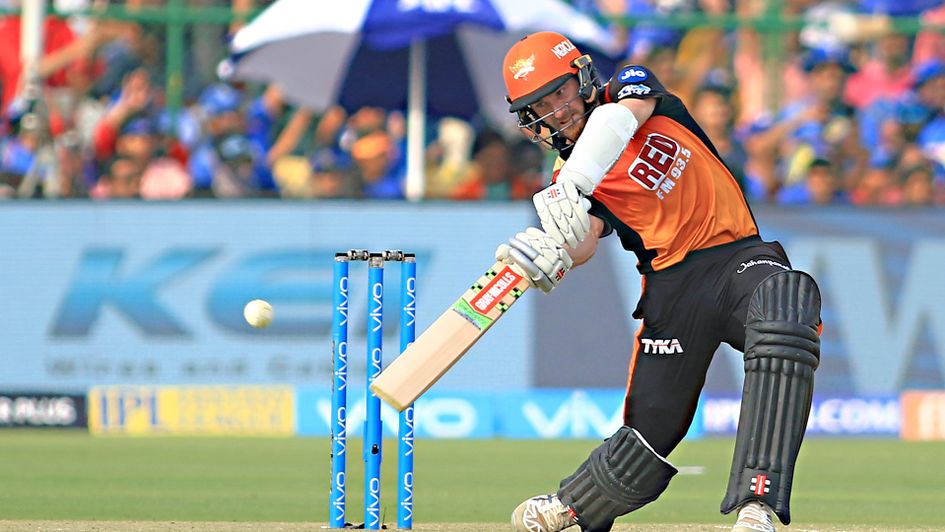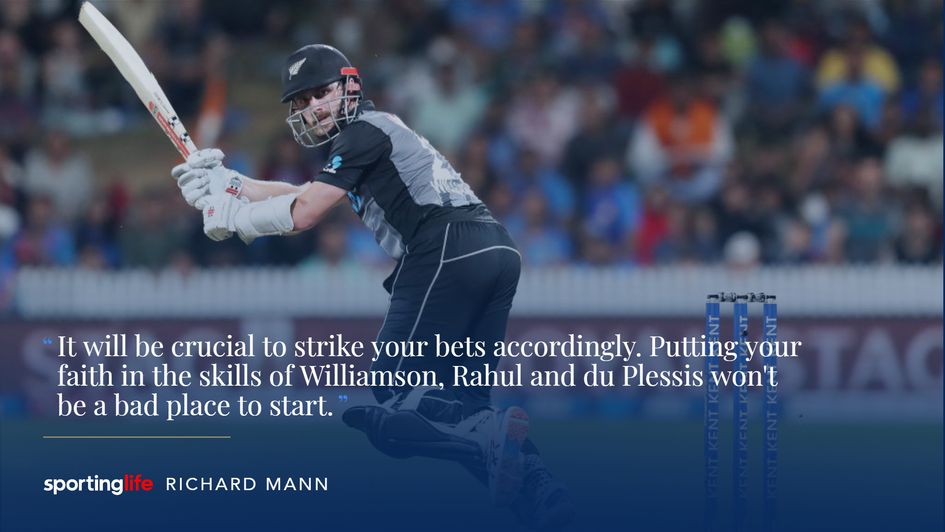Richard Mann provides his latest thoughts on the IPL as traditional batsmen continue to pack a punch in a format expected to be dominated by power players.
Modern-day T20 cricket is supposed to be a batsman's game, and more specifically, a game dominated by its biggest and most powerful six hitters. Step aside touch and craft, shot placement and cricket smarts, and replace with brawn and arrogance, pumped-out chests and downright intimidation.
Ah yes, the classical batsman no longer has a place in T20 cricket. "A good big 'un will always beat a good little un," as they used to say in working class pubs across the north just before chucking out time and the inevitable fisticuffs that would follow.
Except I'm not buying it. Not that classical batsmen are no longer valuable in T20 cricket, anyway - I'll leave the boxing to Chris Oliver and his next big-fight preview. Batsmen who could be defined as classical players with good techniques have, in fact, dominated the IPL run charts so far this year and it is striking that those to have done well in red-ball cricket at the highest level are succeeding here in the shortest form of the game.
For all KL Rahul is an exhilarating player to watch with flair in abundance, this is a man with a Test-match hundred opening the batting in England. His Kings XI Punjab teammate, Mayank Agarwal, has replaced Rahul at the top of the order in India's Test side recently but he has also thrived in IPL 2020. So, too, Shikhar Dhawan; 34 Test matches under his belt and an average just a touch over 40.
💯 FOR DHAWAN!
— Sky Sports Cricket (@SkyCricket) October 20, 2020
His second in the IPL and they've come in back-to-back matches - the first player ever to do it! Another fantastic knock!#DelhiCapitals 150-4. #IPL2020
📺 Watch 👉 https://t.co/tbe3WRmSLU
📋 Scorecard 👉 https://t.co/iklt3DZMTi
#️⃣ #Dream11IPL #KXIPvDC pic.twitter.com/Na1jJ9lc8o
That trio sit first, second and third - not quite in that order - in the leading runscorer charts for this season's competition with Faf du Plessis and Virat Kohli making up the top five. It's a stellar cast but while all five are fine players with strong white-ball credentials, they certainly wouldn't be defined as the 'power players' that are supposed to be taking over T20 cricket. The foundations of their respective success are laid on sound, classical techniques that have always had the scope to evolve and expand as the game moves forward.
That's not to say that power doesn't have a role to play in this form of game, of course it does, and having the ability to clear the ropes at the back-end of the innings, in particular, is a priceless commodity. Kieron Pollard and Rahul Tewatia have demonstrated that in some brilliant run chases this year, similarly AB de Villiers, though there doesn't appear to be any ceiling to his superhuman capabilities.
But the batting units who have enjoyed the most success so far this season are the ones who have backed proper batsmen to deliver big scores and left the late-order hitting to the power players. Once a wonderful white-ball batsman, Shane Watson's game is all about power nowadays and his struggles at the top of the order have mirrored that of his franchise, Chennai Super Kings, while Kolkata Knight Riders continue to shoot themselves in the foot by batting the misfiring Andre Russell ahead of the likes of Dinesh Karthik and Eoin Morgan.
Mumbai Indians have it worked out: allow Rohit Sharma and Quinton de Kock set up the game and then let the likes of Pollard and Hardik Pandya loose in the last five overs. It might occasionally draw criticism when Pollard and Pandya are left with too few balls to play with but the defending champions rarely miss a trick and more often than not find the right formula.
One team who haven't found just that thus far are Sunrisers Hyderabad, who continue to waste the services of Kane Williamson and suffer as a consequence. Sunrisers have only won three games from nine so far this season with Williamson - the leading runscorer in the competition when opening the batting and captain in 2018 - shunted down to number four.
Williamson stroked 735 runs at a strike-rate of 142.44 as Sunrisers made the final in 2018 but since then, Warner's return from his ball-tampering ban and Jonny Bairstow's capture has seen Williamson lose the captaincy and, on occasion, his place in the starting XI.

Bairstow has proven to be an inspired acquisition but the continued backing of Warner remains a mystery as the cracks in his captaincy and regression of his once-destructive batting has begun to show. Warner has consistently chewed up balls in the powerplay, in turn meaning Bairstow has come under even greater pressure to keep the scoreboard ticking, and the Australian's tournament strike-rate of 124.43 is flattered by his last-over mauling of the injured Russell in Sunday's loss to Kolkata. Even then, Warner was unable to get bat on ball when needing two off the final ball to win.
His post-match comments of 'I might need to bite my tongue' were clearly aimed at his underperforming players but a long, hard look at himself, and his position in the side, might be the best place to start.
Warner actually dropped down to number four in Sunday's match after Williamson had tweaked his adductor muscle when fielding and was thus felt of more use to the team batting in the powerplay, as opposed to when the field went back and forced him to do more running.
Williamson - the very definition of a classical batsman - responded with a typically classy 29 from 19 balls to take his tournament aggregate to 181 runs at a strike-rate of 145.96, the latter number superior to both that of Warner or Bairstow.
The notion that power trumps skill is looking increasingly false - it takes lots of different components to make a winning team - but Sunrisers are backing the wrong horse at the moment and it is costing them badly.
Williamson is a doubtful starter for Sunrisers' clash with Rajasthan Royals on Thursday but his injury isn't expected to keep him on the sidelines for too long and I will be keen to keep him on side going forward, particularly if afforded the chance to bat at the top of the order again.
As the competition wears on, and pitches become more tired and trickier to bat on, technique, skill and the ability to manipulate the field - as opposed to hitting over it - will become an even more valuable asset.
As such, it will be crucial to strike your bets accordingly. Putting your faith in the likes of Williamson, Rahul and du Plessis won't be a bad place to start.









